Table of Contents
1. Introduction
2. Types of Utility Carts and Their Key Functions
3. Market Trends for Utility Carts in 2025
4. Essential Considerations When Choosing a Utility Cart
5. Top Utility Cart Models and Their Features
6. Conclusion
Introduction
Utility carts enhance productivity across different sectors by simplifying tasks and operations in various settings, such as workplaces and industrial environments. They offer versatile solutions for moving equipment and organizing materials efficiently. They come in various designs to suit needs—from robust models for heavy-duty tasks to compact versions for lighter jobs. Choosing the right utility cart is key for businesses to meet operational requirements effectively and boost efficiency while reducing downtime. Choosing the best option in 2025 can greatly affect your daily routines with benefits such as portability, storage capacity, and extra features.
Types of Utility Carts and Their Key Functions
Utility carts play a big role in facilitating smooth mobility and organization in different work settings. Their intended purpose is influenced by factors such as design and material makeup. Let’s delve into the categories of utility carts and their essential roles.
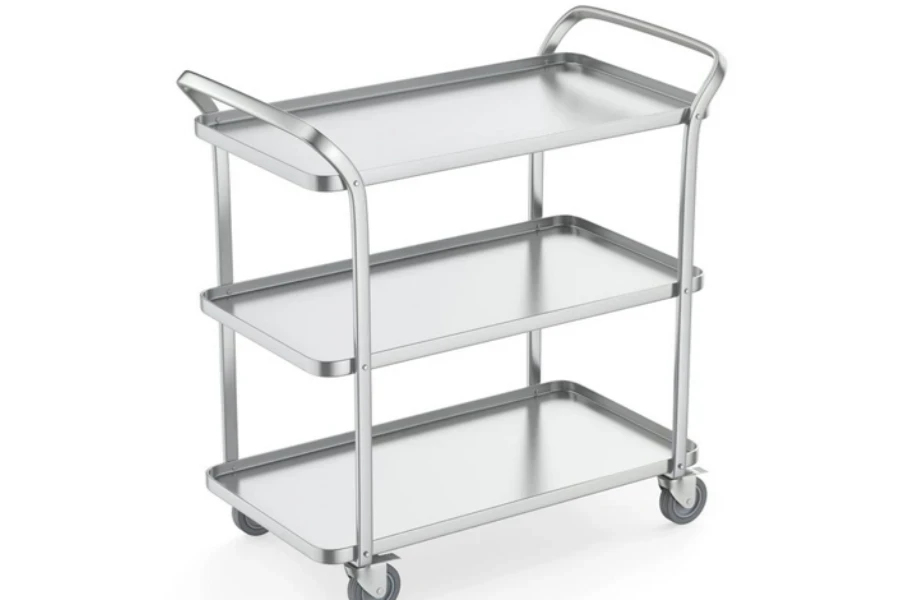
Heavy-duty utility carts: versatile and ideal for industrial environments
Sturdy utility carts are crafted to carry significant weight loads that often surpass 500 pounds. They are usually made from high-density polyethylene or reinforced steel in working environments to withstand impact and corrosion. Commonly found in warehouses and industrial facilities, these carts efficiently move equipment and bulk items. Their strong build guarantees durability and ensures stable transportation of large loads. Numerous models come with shelves or deep tub compartments to keep items secure and stable while moving around and improving safety and efficiency at the same time.
One key feature of these carts is how their wheels or casters are designed. Larger and sturdier casters enable movement over bumpy surfaces and doorsteps, diminishing strain on the cart and the person pushing it. This feature is handy in places where hefty machinery or supplies must be transported across rugged terrain or extensive distances. The blend of a weight-bearing capacity and tough materials renders these carts essential in demanding work environments, prioritizing dependability.
Lightweight carts: suitable for light to moderate tasks
Lightweight utility carts are commonly chosen for places where ease of movement and portability matter most compared to how much weight they can carry. These carts are often seen in office complexes, hotels, and medical facilities where their main purpose is to move lighter objects like documents, stationery items, or smaller medical tools. Usually built using plastic or light aluminum materials, these carts are created for navigation in compact areas and slim corridors to ensure they can be easily steered around.
Even though these carts are not as dangerous as others in the market, they often come with multiple levels or shelves for storing small items in an organized way. Some even have wheels that move smoothly without leaving marks, making them perfect for navigating smooth flooring like tile or hardwood without causing any damage. Their capacity to minimize tiredness among users is crucial in fast-paced settings, making them a valuable tool for improving productivity when used moderately.
Specialty carts: carts with added functionalities for specific uses
Specialty utility carts designed for specific purposes are equipped with features customized to meet the requirements of different industries. For instance, medical utility carts typically include specialized trays and compartments for safely storing medical tools and medications. These carts prioritize ease of cleaning by featuring easily wiped down surfaces, an essential consideration in healthcare environments.
Tool carts in workshop settings play a vital role in keeping things organized and secure with their built-in locking systems for valuable tools and equipment storage. Some specialized carts even have features like power strips for charging gadgets on the go or V-notches for safely carrying and cutting pipes. The versatility of these carts tailored to tasks makes them indispensable in workplaces that demand both flexibility and efficiency.
Market Trends for Utility Carts in 2025
Utility carts continue to evolve in response to industry demands, with several key trends shaping the market in 2025.
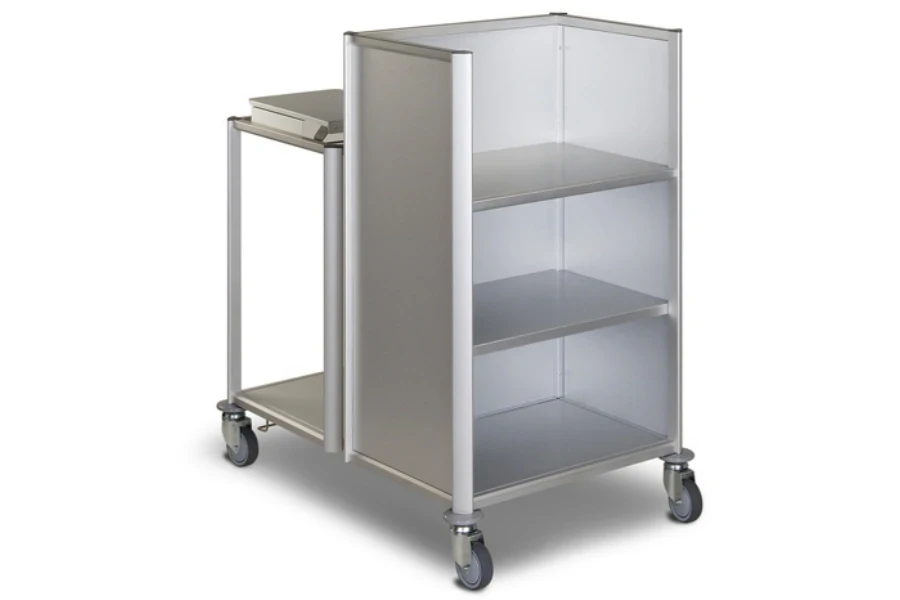
Growth in demand across industries such as healthcare and logistics
One of the factors fueling expansion is the rising need for utility carts in various sectors, such as the healthcare and logistics industries. These carts play a role in healthcare by facilitating safe transportation of medical equipment and enhancing organization to ensure smooth patient care. The logistics industry heavily depends on these carts for effective material handling, especially with the surge of e-commerce and last-mile delivery services. The demand for these utility carts is projected to increase as industries strive to enhance efficiency and streamline workflow processes.
Shifts in material preferences, with growing interest in sustainability
In 2025, an upcoming trend is the move towards sustainable materials in making utility carts. Manufacturers are using eco-friendly methods, such as recyclable plastics and renewable resources, to lessen environmental harm in manufacturing processes. This reflects the growing emphasis across various industries on promoting sustainability and opting for products that help diminish their carbon footprint. Furthermore, there is a growing trend towards utilizing lightweight and sturdy materials such as high-density polyethylene (HDPE), which is valued for its durability and ability to be recycled. It is a popular option for carts used in heavy-duty and light-duty applications.
Customizable options leading market innovation
Personalization is becoming a key factor in driving innovation in the market as businesses are now more interested in carts that can be customized to meet specific requirements. Carts with adjustable shelves and specialized attachments are gaining popularity as they can be easily adapted to various settings such as hospitals and warehouses. The option to modify carts for tasks or industries improves their functionality and provides added value for companies aiming to enhance efficiency and safety. Manufacturers are meeting this demand by introducing flexible designs, which further stimulate market growth.
Essential Considerations When Choosing a Utility Cart
Choosing the ideal utility cart requires assessing various important aspects to guarantee that it fulfills the unique requirements of diverse work settings. Here are crucial factors to ponder when selecting a suitable utility cart.
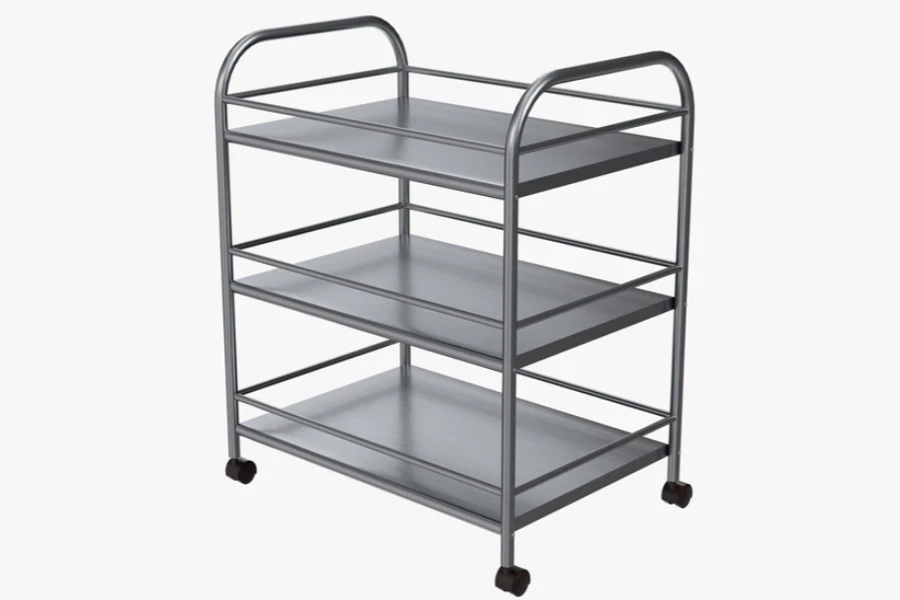
Material: Comparing plastic, stainless steel, and wire options
The type of material used for a utility cart plays a big role in determining its longevity and ability to withstand various environmental conditions, such as weight and exposure to elements like moisture or chemicals. Plastic utility carts made from high-density polyethylene (HDPE) are light in weight and resistant to corrosion, making them suitable for locations where they’re likely to encounter chemicals and corrosion conditions. Nevertheless, it is important to note that they might not be able to carry as many loads as metal carts.
In environments like factories or food establishments where durability is key and handling heavy loads is essential, stainless steel carts are the top choice due to their ability to resist rust and withstand wear and tear. On the other hand, wire carts are great for items that require ventilation, like linens in medical facilities, thanks to their superior airflow and visibility. However, unlike plastic or stainless steel options, wire carts may not hold up well under substantial weight and could bend easily.
Load capacity: Finding the right balance for your needs
Knowing the weight limit is crucial when picking out a utility cart for your needs as they vary in strength from carts that can handle about 200 pounds to sturdier ones that can bear loads over 500 pounds. Selecting the right capacity is key to preventing excessive stress on the cart’s structure or movement capabilities. Using a cart beyond its maximum capacity may damage or hinder mobility. To effectively transport heavy objects in logistics and industrial settings, carts with higher load capacities are opted for safer and more efficient operations.
Mobility: The importance of wheel quality and design
The maneuverability of a utility cart is heavily influenced by its wheel configuration choice. For hospitals or offices, mobility is improved with nonmark rubber casters that move smoothly without marking floors. Outdoor or industrial environments benefit from pneumatic wheels for navigating rough terrains effectively. Swivel wheels enhance movement in tight areas, and locking brakes are crucial for stability during loading and unloading.
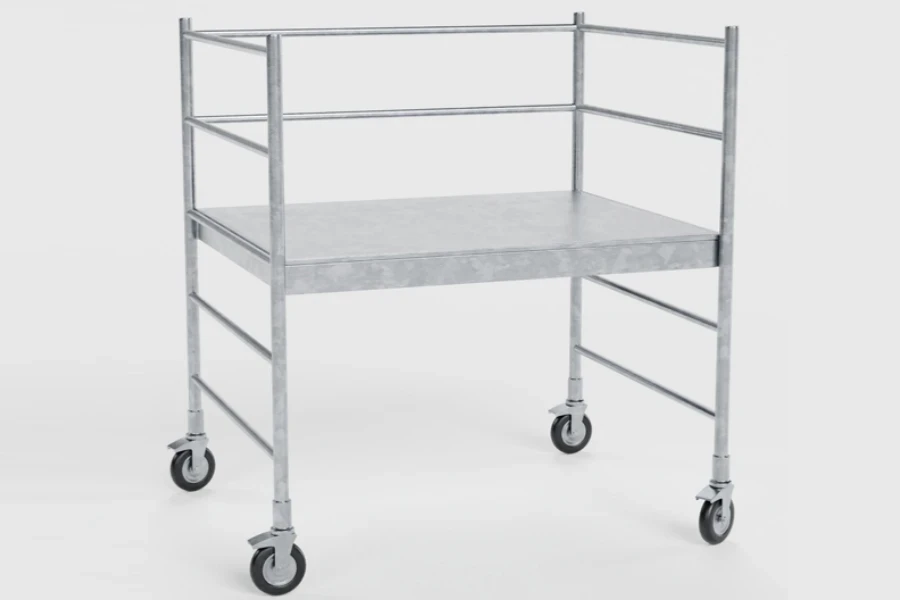
Storage and space: Evaluating collapsible models for better space efficiency
In places with no room for storage options, collapsible utility carts come in handy as a smart solution to the problem. These carts can be folded up and put away neatly when not needed, creating extra space that can be used for other things. This feature is especially helpful in places like warehouses or event venues where the need for carts is not frequent, like during peak times. Storing carts easily without losing usefulness helps businesses run smoothly and efficiently.
Additional features: Accessories such as drawers, locking mechanisms, and specialized trays
Utility carts offer various options and add-ons to boost their practicality and usefulness for various purposes. Certain versions feature drawers or shelves equipped with locks to ensure the safety of delicate items in places such as hospitals or workshops. Specialized trays or bins can be included to enhance organization and simplify carrying tools and supplies without misplacing smaller objects. Moreover, carts with built-in power strips or charging stations cater to settings that are reliant on technology by enabling employees to conveniently charge their devices while on the move.
Top Utility Cart Models and Their Features
When deciding which utility cart to select for your needs at work or home, there are options available with unique features tailored to different types of businesses and tasks users may encounter in their day-to-day activities.
High-capacity models for industrial use
In factories and workshops, it’s crucial to have carts to move hefty items. Heavy duty carts made from plastic or steel, can bear 500 to 550 pounds. Take the two-tier utility carts with reinforced structures and bigger wheels specifically crafted for heavy duties in storage facilities or factories. These versions guarantee secure transport of weighty or large objects over extended distances, even across rough terrains. One way to enhance the safety of transporting loads is by incorporating raised edges in the design to prevent items from slipping or falling during transit.
Quiet-rolling carts for noise-sensitive environments
Places like hospitals and libraries that need to maintain their surroundings use special carts that can move silently without making noise disturbances. These silent utility carts come with unique ball-bearing wheels that reduce sound in motion, ensuring silent transportation. These carts are perfect for transporting supplies and equipment without causing any disruptions, making them a popular option in healthcare facilities and corporate offices where controlling noise levels is essential.
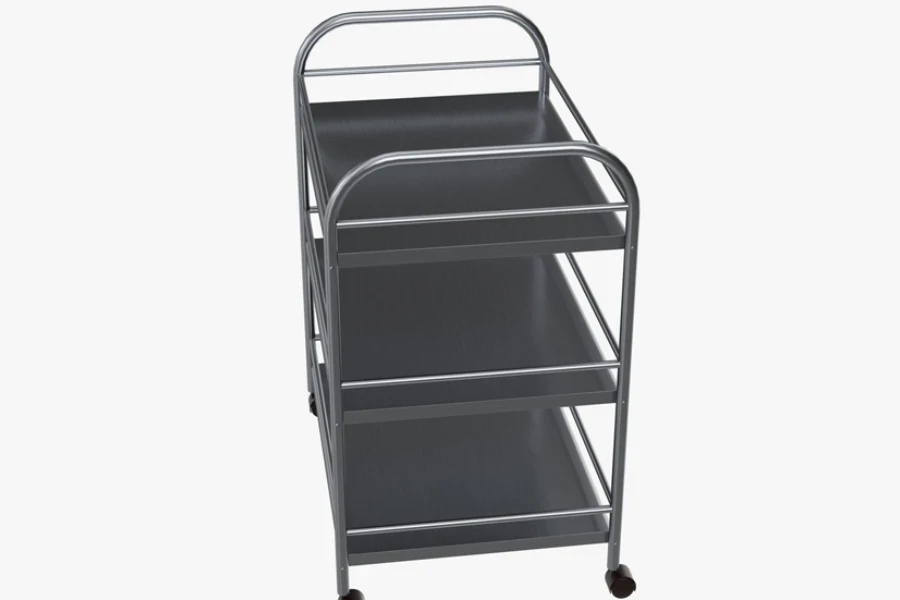
Compact and foldable options for space-constrained areas
In places where storage is limited and there is a need to save space, smartly compact and foldable utility carts come in handy with their flexibility and practicality. You can easily stack them away when not needed, giving extra floor space to work with. These carts are great for work areas like kitchens or offices where being mobile and efficient with space is important. Their strong build makes it effortless to move things around swiftly without cluttering up too much room.
Models with enhanced safety features like lockable wheels or built-in shelves
Safety plays a crucial role in various work settings where utility carts with advanced safety elements come into play to meet this demand effectively. Carts equipped with wheels that can be locked offer stability when loading and unloading tasks are being carried out to prevent any movements. Moreover, having built-in trays maintains orderliness and ensures that tools and materials stay safe while being transported. These characteristics are beneficial in places like medical facilities or workshops where precision and safety are paramount. Including handles, anti-tip features, and locking mechanisms further bolsters worker safety measures and minimizes the likelihood of accidents.
Conclusion
When selecting the utility cart for your needs, it’s important to understand what you require and what’s popular in the market. Businesses should take into account things like the type of material, how much weight it can handle, how easy it is to move around, and the safety features it offers to ensure that their cart is a valuable tool. From heavy-duty models designed for industrial settings to smaller foldable carts ideal for cramped spaces, making a well-informed choice can significantly boost productivity and workplace safety. Being mindful of trends like sustainability and personalization guarantees that the chosen utility cart fulfills present requirements and is also flexible for upcoming needs.




